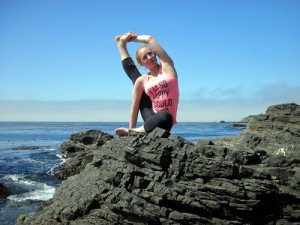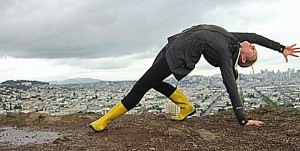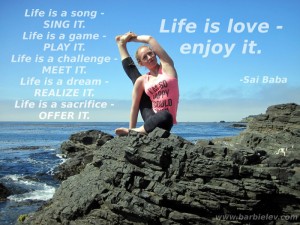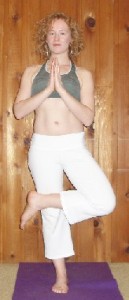I recently wrote an article for Inner Fire about how the pressures of social media may profoundly affect our yoga practice (read the full article over at Inner Fire for all fourteen points with discussion). At the bottom of the post, I wrote the following:
I poke fun with love. I’ve been guilty of many of these things at one time or another over the last ten years.
In the spirit of owning up to inauthenticity on social media, I’d like to share some of my own photos that inspiredpoints in the article.
1. You spent longer taking photos of yourself in [one pose] on your more photogenic side than you did moving through a complete, balanced asana practice.

This is backstory behind nearly every “yoga” photo I have of myself. I now like to say my picturesque photos are of me pretending to do yoga. Cameras are distracting for me and I keep them as far away from my real practice as possible. (Bonus: this is also an example of #2 and #6)
2. To you, the true purpose of pratyahara (withdrawal of the senses) is to make sure you look contented and serene as you press your bare hands and feet into sharp gravel…

The year I was a Wayfarer, Wanderlust featured this photo of me drilling gravel into the palm of my hand. This selfie photoshoot lasted about 10 frames before the heels of my hands were too raw to continue.
4. You have injured yourself taking advantage of an irresistible photo op.

I learned early on never to do yoga poses while buzzed. The photo a friend snapped of me dropping from standing into full splits at a lifeguard-themed pub night is now lost, but my hamstring remembered it for months thereafter.
6. Your significant other rolls their eyes when you ask them to take yet another photo of you doing a balancing pose on a rock while on vacation together.

I took time out of my honeymoon in Hawaii for some #yoga… as if there’s room to do an actual practice on this rock.
8. You’ve perfected the blissful gaze and Mona Lisa smile that every yoga magazine ever loves to feature on its cover.
Practicing on a slippery wet park bench while holding an umbrella always makes me feel blissful and serene.
12. There are no photos of your journeys, only your destinations.

Want to take a guess at how many fussy, gawky, pukey photos it takes to capture a perfect moment like this with a baby?
13. Once the camera is off your practice is over.

I stopped practicing traditional asana the day I found out I was pregnant to retain as much stability as possible in my already hypermobile joints. I didn’t practice traditional poses again until the end of my third trimester in preparation for childbirth… Well, except to take this irresistible photo of my Halloween costume.
Read more about hypermobility during pregnancy here.
14. You take selfies while meditating.
#meditation #nyc #manhatten #zen #fountain #batterypark #sucasana #jnanamudra A photo posted by Barbie Levasseur (@barbieyoga) on
Not a selfie, but still a totally posed meditation shot (and another example of #6). I don’t think I sat in stillness for much longer than it took to get the photo.
Please read the original full article over at Inner Fire: 14 Signs That Social Media is Making You Sacrifice Yoga for #yoga

